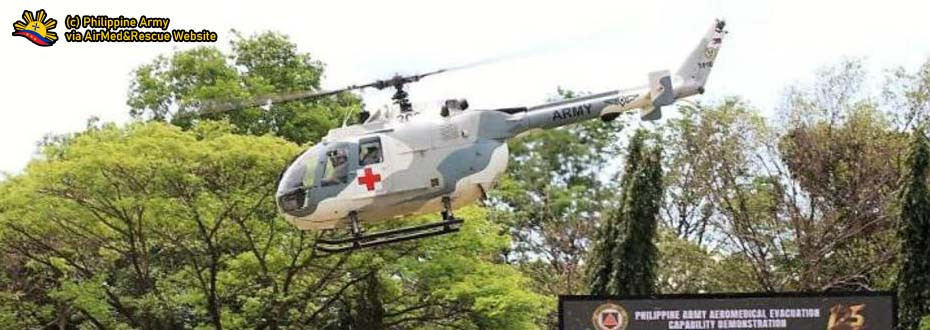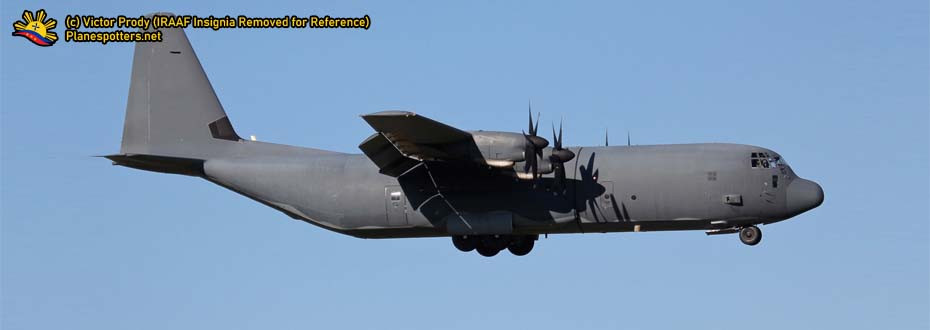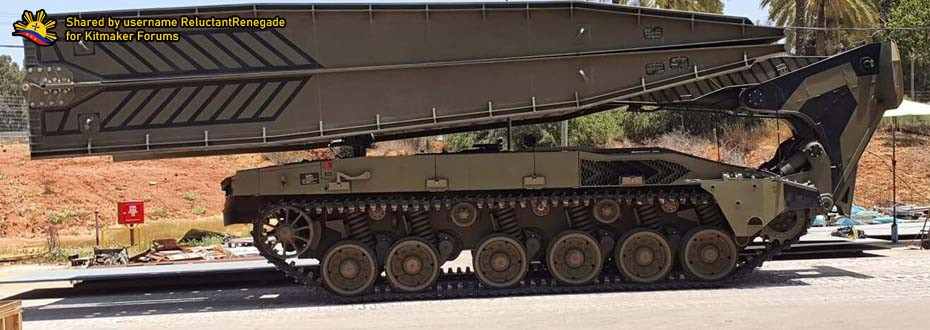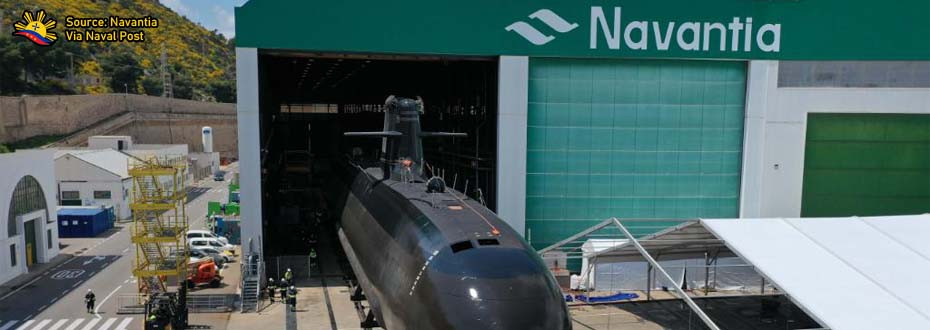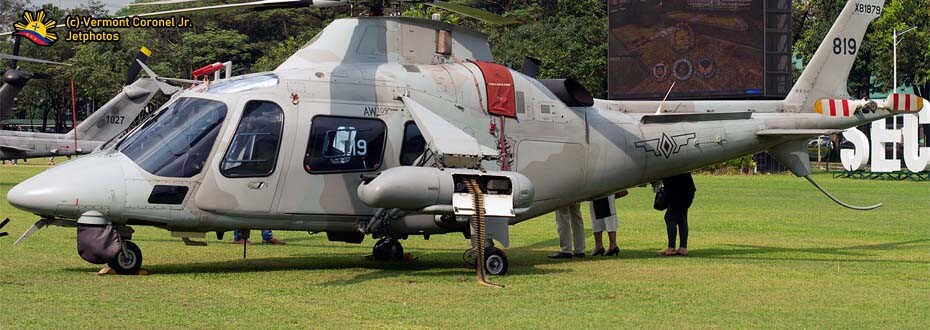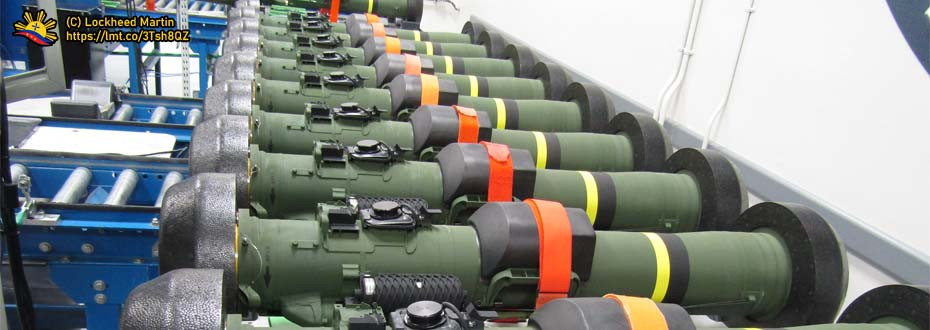Most of the discussions that we made about the Philippine Coast Guard usually talk about the ships the agency purchased and added to its fleet of white-hulled maritime enforcement vessels. Not to mention that we also discussed some other stuff that deals with the agency's desire to modernize further in terms of building additional facilities and improving its overall maritime domain awareness capabilities.
This one will deal with India's offer that aims to strengthen relations of both countries in a way that they provide it for the Philippine Coast Guard to consider as it improves their air unit to implement maritime surveillance, search and rescue, and maritime enforcement.
INFORMATION FROM AN INDIAN DEFENSE OUTLET
 |
India Coast Guard's Dhruv Mk. 3 Helicopter, produced
locally by HAL. (c) Arjun Sarup, Planespotters |
The first glimpse of this information came from an Indian defense outlet known as The Defenstar, citing their source to a certain Saurav Jha, wherein they detailed the Philippine Coast Guard's desire in buying at least seven (7) units of Dhruv Mk 3 helicopter and eight (8) locally produced Dornier Do-228s, both of which were built by Hindustan Aeronautics Limited or known by its abbreviation HAL.
This deal is said to be funded through a line of credit that India has provided to the Philippines, which is basically a form of soft loan that the Philippines can avail of with India shouldering the cost of procuring these said assets, with the payables will be done according to the terms that both sides agreed in settling the loan used in procuring these assets.
The variant that the Indians have offered here for the Dhruv Helicopter will be the one specified for the coast guard use such as the one seen in the image above, wherein such variant is also active in use within the Indian Coast Guard air unit, with the aircraft fitted with sensors onboard that will be discussed further along the length of this article dealing the topic.
There are other variants of the Dhruv Helicopter that is served in other services within and outside India, with the Indian Armed Forces being the primary user of such aircraft as all of the branches obtain these helicopters for their respective use, coming with different requirements that satisfy the needs that the Indian Army, Air Force, and Navy to operate.
In this topic, we will be dealing more with the Helicopter offer that the Indians have offered to the Philippine Coast Guard, with the topic about the Do-228s will have their own discussion and details as these different assets came with different purposes and operational requirements shall the maritime law enforcement agency consider these assets for their own use.
THE DEVELOPMENT
 |
A HAL Dhruv Helicopter of the Indian Coast Guard situated
onboard its Offshore Patrol Vessel. Image Source. |
The HAL Dhruv Helicopter family is considered the first indigenously built helicopter made by Hindustan Aeronautics Limited, an achievement made by a company that produces multiple indigenously produced aeronautical products, alongside the license-built capabilities that the company obtains, all of which primarily serves the purpose to provide the Indian Armed Forces it's needs.
Its development program, known as the Advanced Light Helicopter Development Project, started in 1984 with the slow pace in its overall progress that the first prototype under the program successfully made its maiden flight in the year 1992, eight years since the development began.
It took another eight years for the HAL Dhruv's mass production to begin, as the implementation took throughout the period is plagued with multiple delays, with factors pointed on the design's construction to issues involving concerns on the lack of budget, as well as political-related ones, although the manufacturer managed to get through the situation and successfully filled orders of the Indian Armed Forces for the helicopter project.
Since then, Hindustan Aeronautics Limited started to export its helicopter to countries like Ecuador, which it was considered the first customer and also the one that experienced the shortcomings of the HAL Dhruv (as we will discuss in this article), along with other countries such as the Maldives and Nepal, as well as a deal struck with the Israel Aerospace Industries (IAI) in exporting the helicopters worldwide.
The years of development and production has proven that Hindustan Aeronautics Limited is somewhat capable of producing India's primary indigenous-built helicopters, let alone producing its indigenous aircraft like the HAL Tejas Light Combat Supersonic Fighter, as the premier aerospace company of the country aspires to improve and incorporate its design, along with its usual production of licensed copies of foreign-designed aircraft that the Indian Armed Forces needs.
THE COMPANY
 |
Hindustan Aeronautics Limited is also producing license-built
aircraft for the Indian Air Force, such as the Sukhoi Su-30MKI,
as seen in the image. Source. |
Hindustan Aeronautics Limited in itself is India's primary aerospace industry, specialized in building military and civilian aircraft for the Indian Armed Forces such as its Air Force, as well as the country's maritime law enforcement agencies like the Indian Coast Guard, now with an aspiration of expanding beyond India and get a significant portion of the world's aerospace market.
The company started on December 23, 1940, as the Hindustan Aircraft Limited in Bangalore, India (which was still considered as the British Raj at that time), when it was incorporated by Shri Walchand Hirachand, along with the then Government of Mysore, as they aspire in building a whole new industry of manufacturing aircraft in the country, bearing its fruit even to the present day.
A current iteration of the company didn't exist until 1964, the year when both the Hindustan India Limited and Aeronautics India Limited were merged as one entity by the Indian Government, which since then expanded its program in producing licensed build aircraft while developing new designs at the same time, even to the extent that it participated in the space programs that the Indian Government initiated through the Indian Space Research Organization or ISRO.
As of the year 2020, Hindustan Aeronautics Limited is producing the SU-30 MKI, LCA & DO-228 aircraft and ALH-Dhruv, Chetak, Cheetal & LCH Helicopters, two of which are offered to the Philippine Coast Guard as India's way of improving its ties with the Philippines, whilst giving an aspiration of improving the air unit of the country's maritime law enforcement agency.
SPECIFICATIONS
To fill up the gaps unspecified in the table above, as well as to give details on the armaments mentioned, let it be noted once again that the Maximum Take-Off Weight or MTOW of the HAL Dhruv Mk.3 is at 5.5 tons, or around 3 tons more than the helicopter's empty weight of 2.55 tons while the Mk.4 variant has the Maximum Take-Off Weight of 5.8 tons, a small increase in capacity than its predecessor.
As to the armaments, on the other hand, it is a feature that can be seen with the Indian Armed Forces' HAL Rudra Attack Helicopter, which is basically an armed variant of the HAL Dhruv Advanced Light Helicopter, although it can still be counted as part of the specifications provided for the HAL Dhruv Helicopter since both share similar design features and structure.
In the case of the HAL Dhruv Mk.3 and Mk.4, their engines that form their powerplant is the Shakti Engine, itself derived from Safran's Ardiden 1H1 turboshaft engines made by the same manufacturer as the Turbomeca TM 333-2B2 turboshaft engines, produced in license by Hindustan Aeronautics Limited for the HAL Dhruv Helicopter variants specified herein.
The Shakti Engine runs at 12% more power than its predecessor at around 1,400shp to 2,000shp (shaft horsepower), comparing to the TM-333-2B2 turboshaft engines that run only at around 999shp.
To surmise this up, HAL Dhruv's design is capable of taking the following mission roles and requirements ranging from passenger transport to search and rescue operations, along with casualty evacuation and logistic air support that are all in line with the operations and mandate of the Philippine Coast Guard as a maritime law enforcement organization.
DHRUV VARIANTS
As with other aircraft designs, the HAL Dhruv Advanced Light Helicopter comes with multiple variants and iterations, wherein improvements and upgrades were introduced with each variant get enhanced and integrated into the production line, with a newer helicopter variant introduced gets better capabilities than the previous one as it came with features that its predecessors didn't have.
There are two main groups of variants or versions that Hindustan Aeronautics Limited has in their manufacturing of the Dhruv Advanced Light Helicopter, which is the military and civilian variants, of which each group has its own sets of variants with improvements introduced as newer ones were developed and integrated into the production line.
On the military group, there are at least four variants of Dhruv Advanced Light Helicopter that were produced by the mentioned Indian airspace and defense company, which are the known Mk.1, Mk.2, Mk.3, and Mk.4, whilst the civilian group has Dhruv (C), Dhruv (CFW), Dhruv (CS), and the Garuda Vasudha geophysical-oriented Advanced Light Helicopter.
Just as reported by Defenstar, the Philippine Coast Guard is opting to have the HAL Dhruv Mk.3 Advanced Light Helicopter as this is also the one in-service in the Indian Coast Guard air unit. Take note that this Dhruv Mk.3 Helicopter is specialized in Coast Guard operations like this one undertaking trials in the Indian Coast Guard, wherein it was tested with its performance before being accepted into the Indian maritime law enforcement organization.
The first of the Mk.3 HAL Dhruv Advanced Light Helicopters were handed over to the Indian Army in 2011, with the Indian Air Force followed suit in 2012 as they received the first batch of Dhruv ALH Mk.3, consisting of 10 units. The recent Indian Coast Guard composition of Mk.3 Dhruv Advanced Light Helicopters, referencing this linked reference at the time of this article's posting, consists of eight active units with plans to purchase 14 more units.
Speaking of Coast Guard choices, the Mk.3 variant of the Dhruv Helicopter that the Indian Coast Guard currently obtains, and the one that the Philippine Coast Guard considers, is the one specialized for maritime operations that both maritime law agencies share.
We are referring to the Advanced Light Helicopter (ALH) Dhruv Mk.3 MR variant that comes with an electro-optical sensor onboard the unit, along with a surveillance radar installed onboard that is capable of detecting and identifying marine vessels at its maximum coverage of 120 nautical miles, wherein it increases the capability of a coast guard in terms of detecting any maritime-related threats that endanger the country's maritime security.
OTHER EXPORT CUSTOMERS AND ISSUES
 |
Dhruv Advanced Light Helicopter of the Ecuadorian Air Force,
first export made by Hindustan Aeronautics Limited.
(c) Wikimedia Commons. |
Aside from India, several Dhruv Advanced Light Helicopters were exported to several countries by Hindustan Aeronautics Limited. One of those countries is Ecuador, which the Indian aerospace company considered its first export customer of the helicopter. They have several issues with the Dhruv Advanced Light Helicopters obtained in the inventory that prompted them to decommission it from service recently.
Talking back about Ecuador, the country's air force encountered problems with the Dhruv Helicopters that potential users like the Philippine Coast Guard needs to be aware of. Since Hindustan Aeronautics Limited's first delivery of Dhruv Helicopters to the Ecuadorian Air Force, four crashes took place during the period that it took the lives of three military personnel and injured several more.
It has been said that two out of four said crashes are due to mechanical defects seen in the helicopter, which compelled the Ecuadorian Government to ground the remaining Dhruvs in its fleet and end the contract it has with the Hindustan Aeronautics Limited. Aside from the mechanical defects, securing spare components for the Indian-made helicopters from the manufacturer was also proven to be problematic.
The problems that Ecuador faced are something that an agency like the Philippine Coast Guard needs to consider. Add to that the fact that the agency already operates a handful of Airbus H145 Helicopters in its air fleet. Nevertheless, the Philippine Coast Guard's interest in obtaining an air asset like the Dhruv Advanced Light Helicopter from Hindustan Aeronautics Limited may still add the capabilities that its air unit needs.
Aside from India and Ecuador, other countries are also using the Indian-made helicopter in their respective agencies. One of those is the country of Mauritius, where both of its military and civilian law enforcement units (police) obtain the HAL Dhruv Helicopter in their respective fleets. Including in the user's list are the Peruvian and Turkish Health Services.
To summarize this up, the number of users that obtain HAL Dhruv Advanced Light Helicopters in their fleet and the mishaps that the Ecuadorian Air Force took before removing them all from service are just some of the considerations that the Philippine Coast Guard may take.
WHAT REMAINS TO BE SEEN
 |
Philippine Coast Guard's Airbus H145 Helicopter.
From Scramble Magazine. |
Currently, the Philippine Coast Guard gets a handful of Airbus H145 Helicopters in its air unit. These helicopters augment the operation of its Offshore Patrol Vessels (OPVs) and Multirole Response Vessels (MRRVs) in upholding the mandate of the Philippine Coast Guard as a maritime law enforcement agency. Getting them is essential for the agency's search and rescue operations on the high seas.
One might think that adding a different type of helicopter makes logistics complicated. This isn't the case for the HAL Dhruv Advanced Light Helicopter, as this came with a higher tonnage maximum takeoff weight than the Airbus H145 Helicopters. The said higher MTOW was the basis in choosing HAL Dhruv ALH as the alternative helicopter for the project.
While this helicopter is being considered, the accidents that occurred in the Ecuadorian Air Force involving this type of helicopter needs to be considered by decision-makers. This can be justified especially given that the Ecuadorian Air Force obtained an earlier variant of the HAL Dhruv ALH while the Philippine Coast Guard might be getting an improved variant of the said helicopter.
With this progress report on the pace that the Philippine Coast Guard takes on its modernization efforts, we may say that it is laudable that they are getting newer assets left and right. Multirole Response Vessels and several Coastal Radar Station outposts from Japan, an Offshore Patrol Vessel from France, and Airbus H145 helicopters are some fruits made from this endeavor they pursue.
It remains to be seen whether the outcome is favorable to this plan and proposal or not since the final decision lies within the leadership of the Philippine Coast Guard. Nevertheless, the consideration of adding at least seven (7) HAL Dhruv Advanced Light Helicopters in its air unit is a significant gain for the organization's maritime law enforcement capabilities.













